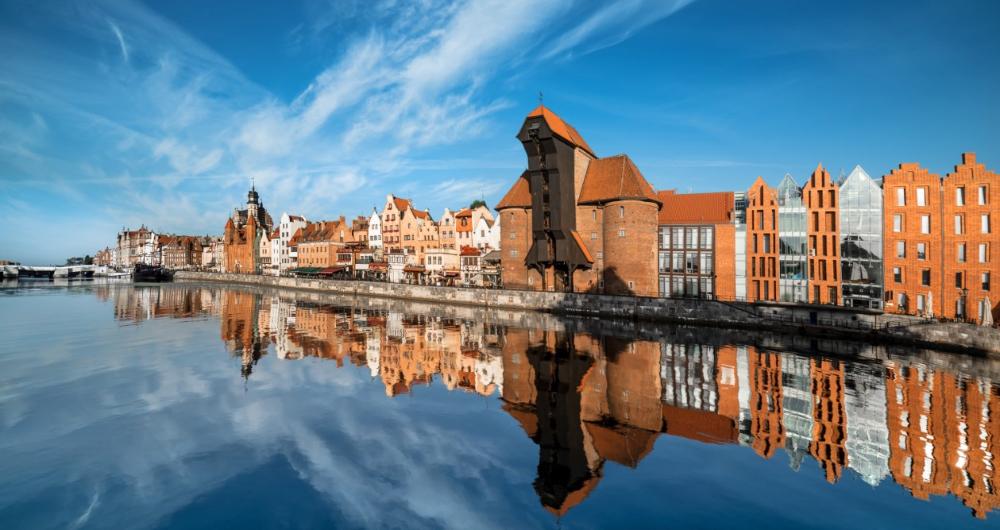In This Article
Want colorful Old Town charm with a Baltic breeze? Head to Gdansk! This historic port city on Poland’s northern coast offers a unique blend of Gothic architecture, maritime history, and seaside fun. Whether you’re strolling past Hanseatic facades, touring WWII sites, or enjoying amber shops and pierogi, Gdansk is a cultural treasure on the Baltic Sea.
Gdansk, Poland Highlights:
- Stroll along Long Market (Dlugi Targ): Lined with colorful buildings, Neptune’s Fountain, and lively cafés in the heart of Old Town.
- Visit St. Mary’s Church: One of the world’s largest brick churches with panoramic views from its tower.
- Explore the Museum of the Second World War: A powerful and modern museum that traces global and local wartime history.
- Walk the Royal Way: Historic street filled with Renaissance-era architecture, ideal for photos and shopping.
- Relax along the Motlawa River: Enjoy waterfront dining, see the medieval crane, or take a boat ride to Westerplatte.
Best Time to Visit Gdansk, Poland
The best time to visit Gdansk is during the late spring through early fall (May–September). Summers bring long days, festivals, and beach-friendly weather. Late spring and early fall offer fewer crowds and mild temperatures. Winters are cold but festive, especially around Christmas markets.
How to Get to Gdansk, Poland
- By Air: Fly into Gdansk Lech Walesa Airport (GDN), just 30 minutes from the city center by taxi or train.
- By Train: Gdansk Glówny (main station) connects the city to Warsaw, Kraków, and other Polish and European cities.
- By Ferry: Ferries connect Gdansk to Sweden (Nynäshamn) and other Baltic Sea ports.
Where to Stay in Gdansk, Poland
- PURO Gdansk Stare Miasto – Stylish hotel near Old Town with modern rooms and free bike rentals.
- Hotel Gdansk Boutique – Upscale hotel in a restored granary with a harbor view and its own microbrewery.
- Celestin Residence – Cozy, affordable option located in a historic building steps from the riverfront.
Best Things to Do in Gdansk, Poland
1. Pose by the Iconic Neptune’s Fountain
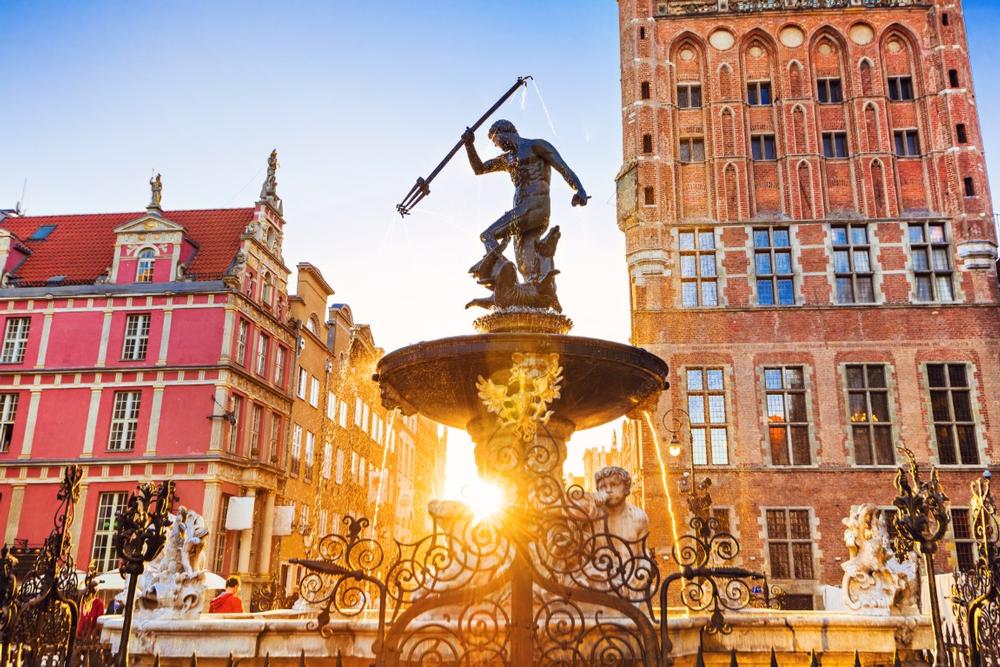
© kite_rin/stock.adobe.com
Neptune’s Fountain
has been an important landmark in the city of Gdansk since 1633, when it was constructed to add an air of sophistication and financial importance to the entrance of the Artus Court meeting house. Originally the statue of Neptune was an excellent example of the Flemish Mannerism style, but after several renovations and additions you will now notice a distinct Rococo style. The impressive statue was saved from destruction during WWII by being dismantled and carefully hidden away. Legend has it that the city’s famous Goldwasser liqueur was created when Neptune struck his trident at all the gold coins in his fountain, splintering them into the fine gold flakes found in the liqueur.
Neptune’s Fountain, Dlugi Targ, 80-833 Gdansk, Poland
2. If You’re a History Enthusiast, Visit Westerplatte
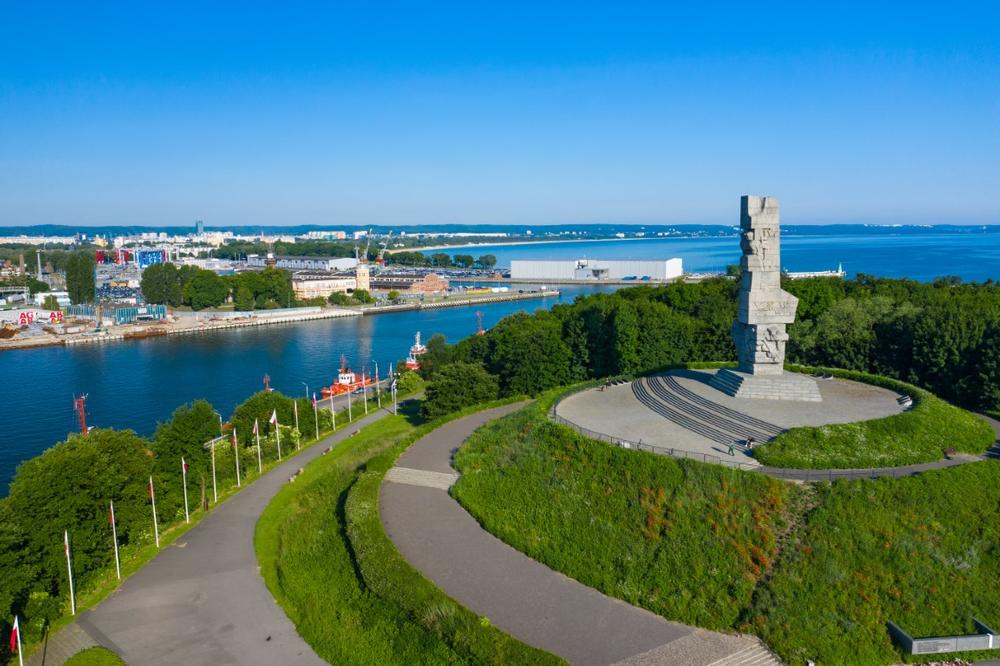
© Curioso.Photography/stock.adobe.com
Westerplatte is without doubt a must-see attraction for anyone interested in the history of WWII. Westerplatte is notorious as the place where the very first shots of WWII where exchanged – an opening salvo which eventually led to the death of around 80 million people and changed the world forever. In the early 1900’s, Westerplatte had a far pleasanter reputation as a place where locals came to meet and enjoy the beach. You can learn all about Westerplatte on a guided tour or explore the historic park and memorial site at your own pace. There is a small museum located in Guardhouse No.1 and a permanent outdoor exhibition.
Westerplatte, 80-001, Gdansk, Poland
3. Marvel at Gothic Grandeur Inside St. Mary’s Basilica
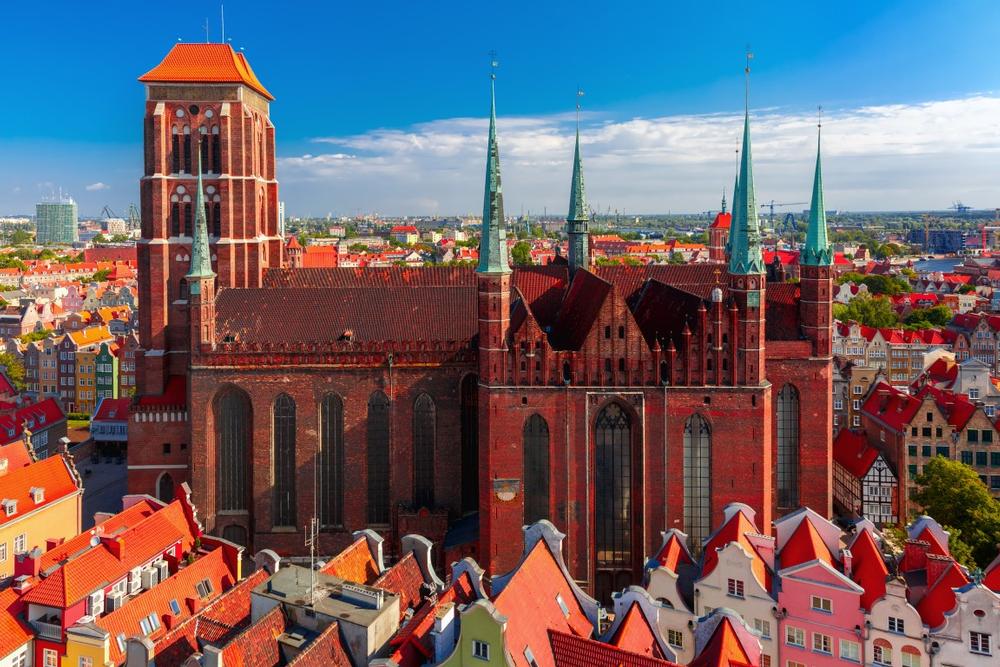
© Kavalenkava/stock.adobe.com
St. Mary’s Basilica
is one of the largest and oldest brink churches in the world and is essential viewing for any visitors interested in history and architecture. The church is also the most easily spotted attraction in the city, towering over the rest of the city’s ancient buildings. As you explore the extraordinary interior of the church, it is worth reflecting on the incredible feat of engineering this would have been back in 1379 when construction began. It took over 159 years to complete the church, which features 7 spire towers, 3 ceramic towers and an enormous 78m bell tower. The best way to learn all about the fascinating history and the artworks inside the church is to join a guided tour.
St. Mary’s Basilica, ul. Podkramarska 5, 80-834, Gdansk, Poland, Phone: +48-58-301-39-82
4. Catch the Energy and Excitement at Stadion Energa
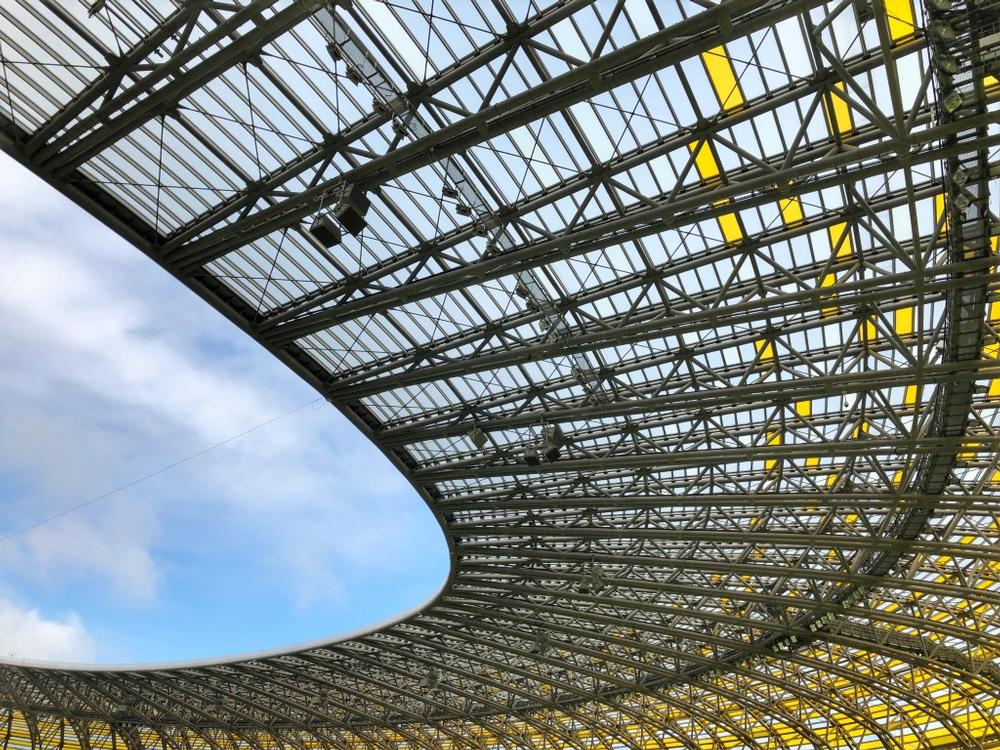
© maciej nicgorskiEyeEm/stock.adobe.com
Besides being a superb venue for watching Poland’s footballers in action,
Stadion Energa has so much more to offer visitors. Ardent football enthusiasts can sign up for a tour of the stadium which will take you behind the scenes to see the locker rooms and much more. The enormous sports stadium encompasses the thrilling Fun Arena, which offers exciting activities for all ages. There is an enormous Playground Arena to keep children busy for hours, while older children and teens can enjoy the Escape Rooms, paintballing at Zoltar Apocalypse, roller skating and skateboarding, trampolines at the Movement Arena and go-carting. Those with nerves of steel can try bungee jumping.
Stadion Energa, Pololen Lechii Gdansk, 1 PL 80-560, Gdansk, Poland, Phone: +48-58-768-84-44
What to do if you are traveling with kids:
5. Step Into Maritime History at The Crane, National Maritime Museum
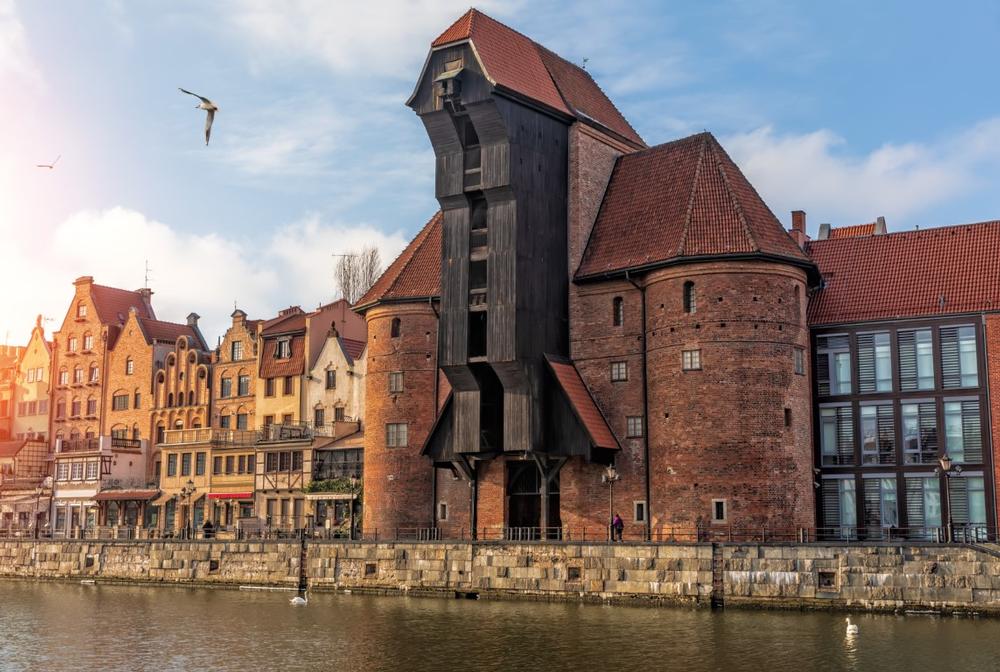
© AlexAnton/stock.adobe.com
One of Gdansk’s most unique and interesting attractions is The Crane, National Maritime Museum, a marvelous medieval invention which was once used to hoist loads and install ship’s masts. The Crane consists of a fascinating system of blocks and turnstiles which were operated by walking workers. The Crane is wedged between two huge towers which formed a water gate which once protected the town from the harbor. At the adjacent National Maritime Museum you can learn all about marine archaeology at the interactive Maritime Culture Center. Visiting The Crane and the Maritime Museum offers a fun and interesting day out for all ages and should be a must-see attraction on your Gdansk itinerary.
The Crane, National Maritime Museum, Szeroka 67/68, 80-835 Gdansk, Poland, Phone: +48-58-301-69-38
6. Stroll, Shop, and Explore Ulica Dluga (Dluga Street)
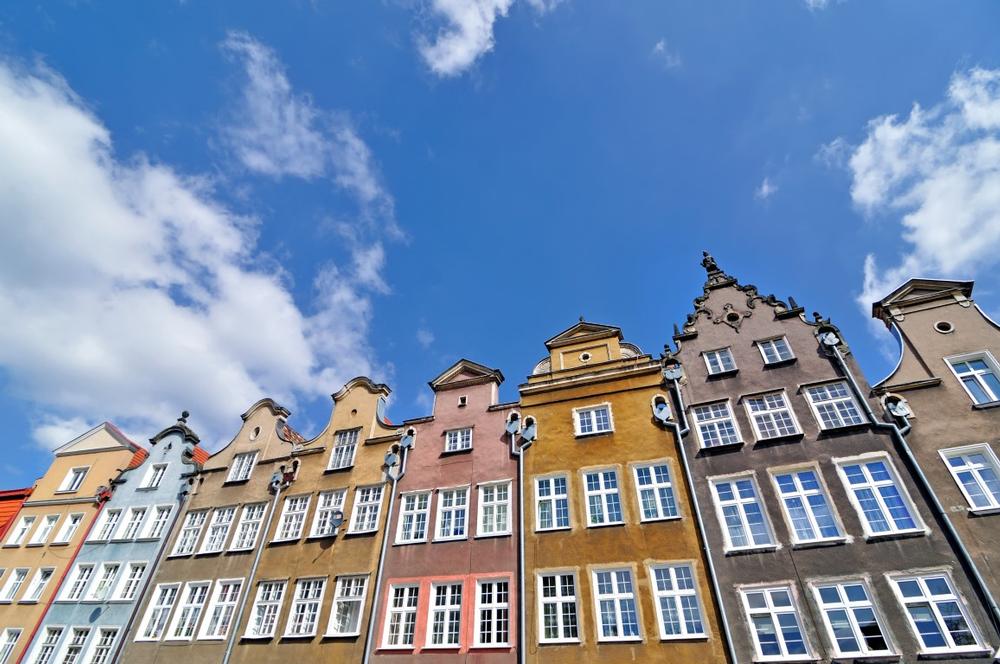
© Tomasz Warszewski/stock.adobe.com
There is no better place to see and explore the essence of historic Gdansk than wonderful
Dluga Street, also called the Royal Route. History and architecture enthusiasts can spend several hours in Dluga Street, admiring the wonderful merchants’ houses which were once home to the city’s wealthiest residents. Originally dating back to the early 14th century, Dluga Street runs from the Golden Gate to the Long Market and was almost completely destroyed during WWII. Today visitors can admire the carefully re-constructed city showcase. Along the way you can stop for a drink or snack at one of the many pavement cafés or shop at one of the lovely boutiques.
Ulica Dluga, Gdansk, Poland
Activities and Attractions for Couples:
7. Admire Historic Elegance at the Town Hall (Ratusz)
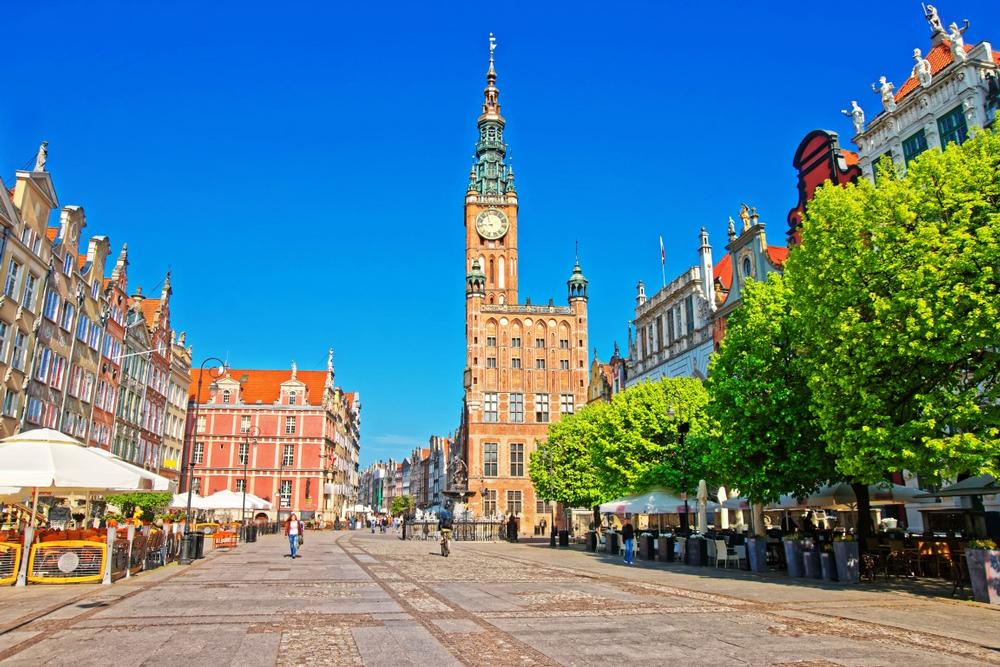
© Roman Babakin/stock.adobe.com
Another of Gdansk’s historic treasures which had to be totally reconstructed after WWII, the stately Town Hall (Ratusz) is located on Ulica Dluga. This beautiful building was originally constructed in the late 14th century, when it was used for all state business. Appropriately, the Town Hall was an extravagant place and great care has been taken to reproduce its original grandeur. The lofty bell tower dominates the skyline and contains a 37-bell clarion. The interior of the building is now home to the National History Museum and contains beautifully painted ceilings, elaborate furnishings and frescoes. If you care to climb up to the top of the bell tower your effort will be rewarded by wonderful views of the city.
Town Hall, Ulica Dluga, 46/47, Gdansk Old Town, Poland, Phone: +48-58-573-31-28
8. Immerse Yourself in Art and Culture at The National Museum
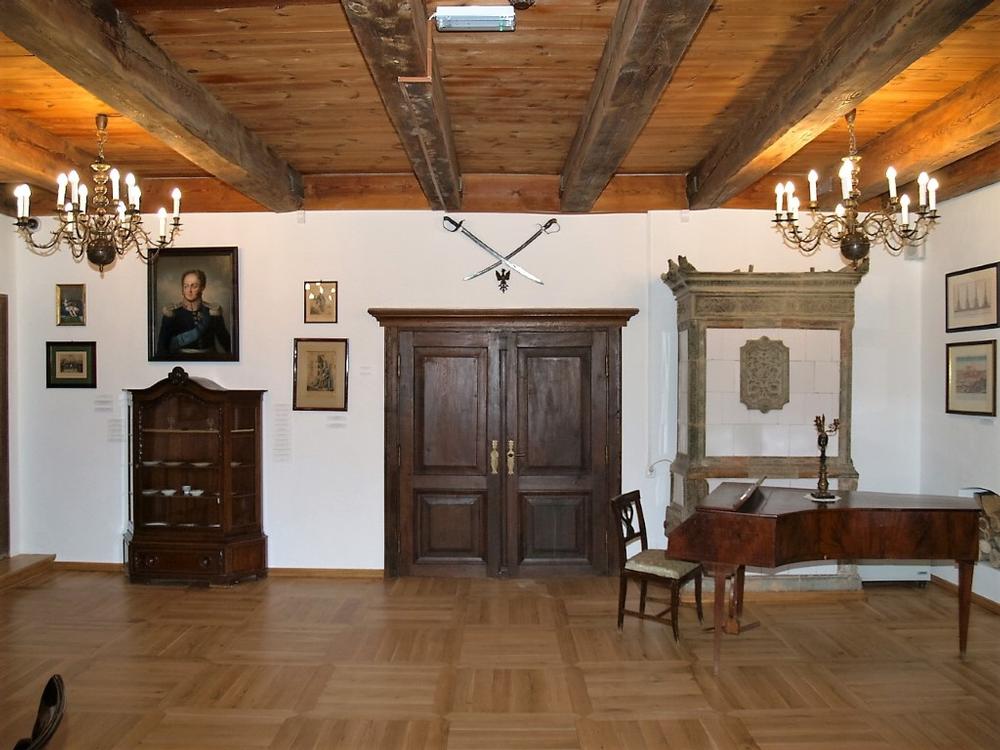
© The National Museum
The National Museum Gdansk is a must-see attraction for all art and history lovers. The museum is home to a huge permanent collection of historic European art, including a substantial collection of works by Jacob Kabrun (1759-1814) and many other European masters. The wonderful collection is housed in what was once a late Gothic Franciscan monastery. Like much of the city, this historic old building was partially demolished during WWII and has been very carefully reconstructed to preserve its unique character. The chance to admire the legendary Last Judgment by Hans Memling will certainly be one of the highlights of your visit.
The National Museum, ul. Torunska 1, 80-822 Gdansk, Poland, Phone: +48-58-301-68-04
9. Wander Through a Living Art Gallery at Zaspa’s Murals

© svetlanais/stock.adobe.com
Zaspa is one of the largest plattenbau (purpose-built, pre-fabricated settlements) in Poland. Although intended to become self-sufficient suburbs, the original purpose of Zaspa was never fully realized. After many decades of neglect, Art was introduced to the settlement in an effort to uplift the area and the community. When you visit today you can take a guided tour by one of the Zaspa residents who will explain the history and significance of the amazing collection of Monumental artworks which have been executed by artists from all over the world. You can book a guided walking tour or pick up a map and explore at your own pace.
Zaspa's Murals, Cultural Information Point, Dlugi Targ 39/40, Gdansk, Phone: +48-58-301-20-16
10. If You’re Fascinated by Treasures, Explore the Amber Museum
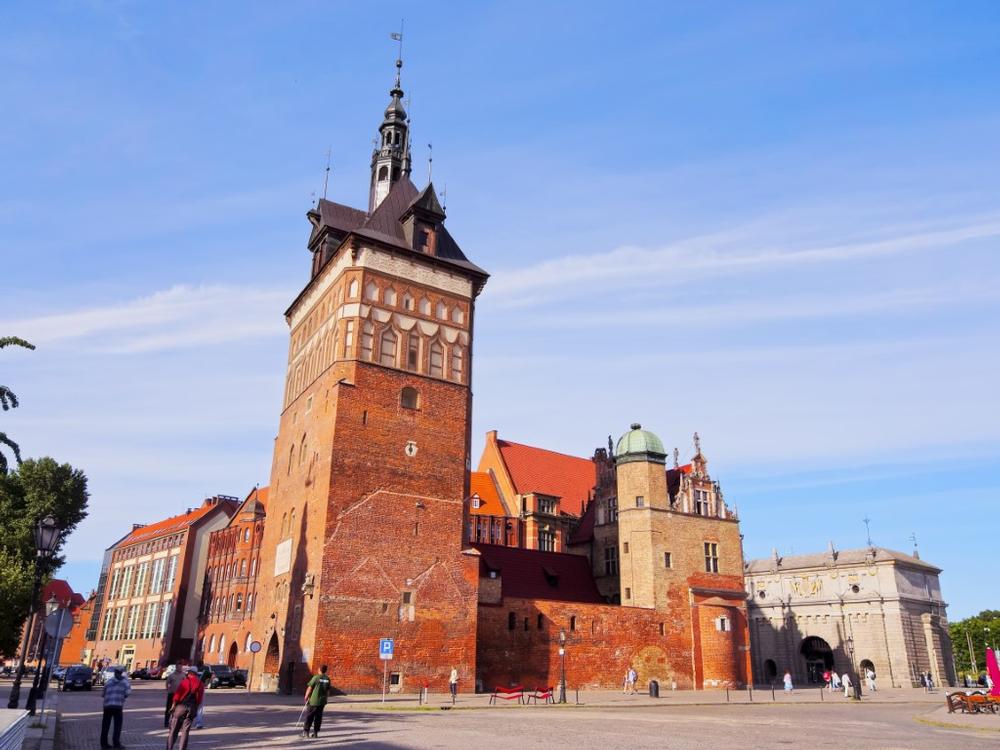
© Karol Kozlowski/stock.adobe.com
Forming part of the Gdansk Museum, what was once a medieval prison tower and torture chamber is today home to the interesting Amber Museum. Located in the historic Foregate building, the museum offers a glimpse into the history of Baltic amber. In addition to admiring all the different types of jewelry and décor made from amber, you will also have a chance to see some of the former, cramped prison cells and learn about notorious medieval instruments of torture. To enhance the experience, background sound effects of moaning and wailing are piped into the museum. Entrance is free on Tuesdays and if you take the effort to climb to the top of the viewing platform in the tower you can admire great city views.
Amber Museum, Gdansk Museum, ul. Dluga 46/47, Gdansk, Poland, Phone: +48-58-573-31-28
Where to Eat in Gdansk, Poland
- Pierogarnia Mandu – Local favorite for traditional Polish dumplings (pierogi) with creative and classic fillings.
- Goldwasser Restaurant – Elegant riverside dining with Polish specialties and famous gold-flecked liqueur.
- Browar PG4 – Craft beer hall inside the train station with hearty food and house-brewed lagers.
If you are interested in local events:
- St. Dominic’s Fair (late July–August) – One of Europe’s oldest markets, with crafts, food, music, and parades.
- Gdansk Christmas Market (December) – Festive stalls, light displays, mulled wine, and gifts in the Old Town square.
- Solidarity of Arts Festival (August) – Celebration of international music, creativity, and civic values.
If you are looking for unique day trips within 30 Minutes to 2 Hours of Gdansk, Poland:
- Sopot (30 min) – Relaxed seaside resort with Europe’s longest wooden pier and sandy beaches.
- Gdynia (40 min) – Modern port city with a maritime museum and lively waterfront.
- Malbork Castle (1.5 hrs) – Europe’s largest brick castle and UNESCO site, home of the Teutonic Knights.
- Hel Peninsula (2 hrs) – Windswept beaches, lighthouses, and a marine seal sanctuary on a narrow sandbar.
- Kaszuby region (1–2 hrs) – Peaceful countryside with lakes, forests, and traditional Kashubian culture.
Frequently Asked Questions:
-
What is Gdansk’s historical significance?
-
Gdansk is the city where the first salvos of World War Two were fired in 1939. As such, it is a magnet for history buffs with several attractions dedicated to WWII history.
-
How old is the city of Gdansk?
-
Gdansk is a very old city, having recently celebrated its 1,000th birthday.
-
What happened to Gdansk’s original architecture?
-
While Gdansk should be filled with wonderful ancient architecture, much of its original buildings were damaged or destroyed during WWII. They have been painstakingly rebuilt to preserve the city’s heritage.
-
What can visitors do in Gdansk?
-
Visitors can explore many museums and landmarks to learn about the city’s history. For a change of pace, they can have fun at the Fun Arena at the Energa Stadium.
-
What local specialties should visitors try in Gdansk?
-
A visit to Gdansk would be incomplete without tasting pierogi and buying some lovely amber jewelry.
At a Glance:
| Best Time to Visit |
Medium-Priced Places to Stay |
Tips for Exploring |
| Spring (March-May) – Mild weather, blooming flowers, and fewer tourists. |
PURO Gdansk Stare Miasto – Modern boutique hotel in the Old Town. |
Walk along Dlugi Targ – Enjoy the colorful facades and lively street atmosphere. |
| Summer (June-August) – Peak season with warm weather and outdoor events. |
Hilton Gdansk – Stylish hotel with a rooftop terrace overlooking the Motlawa River. |
Relax at Stogi Beach – A scenic Baltic coastline spot just outside the city. |
| Fall (September-November) – Fewer crowds, mild temperatures, and autumn charm. |
Hotel Gdansk Boutique – Cozy stay with an on-site brewery. |
Visit the European Solidarity Centre – Learn about Poland’s rich history of resistance. |
| Winter (December-February) – Festive Christmas markets and a cozy atmosphere. |
Radisson Hotel & Suites Gdansk – Centrally located with great city views. |
Explore Gdansk’s Christmas Market – Enjoy mulled wine, local crafts, and holiday lights. |
How did I do?
Is the article too broad, too narrow, or just right ? Do you like the presentation of photos and text? Let me know in the comments! If you want to see more in this location, I can put it on my editorial calendar. I'm listening!
Plan Your Trip


